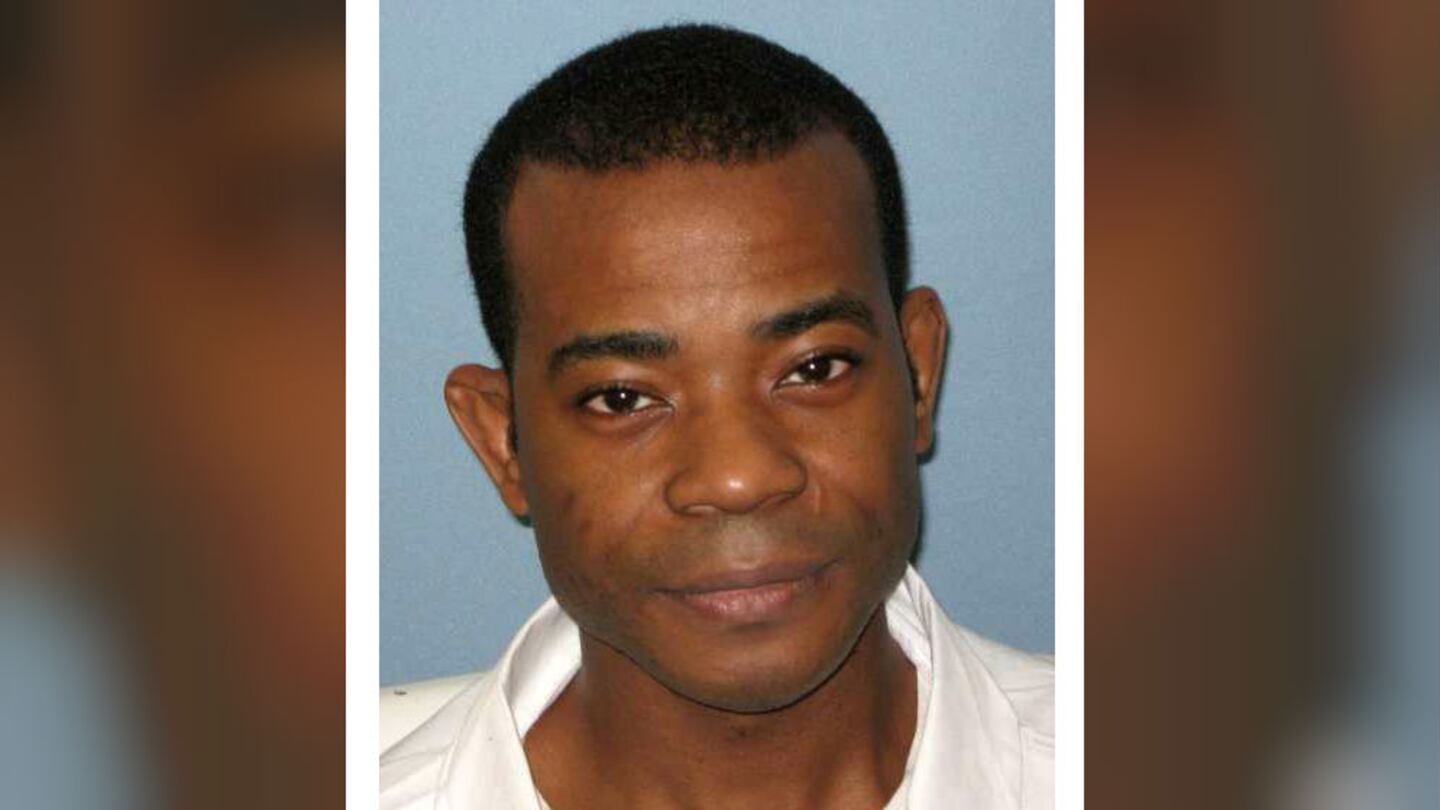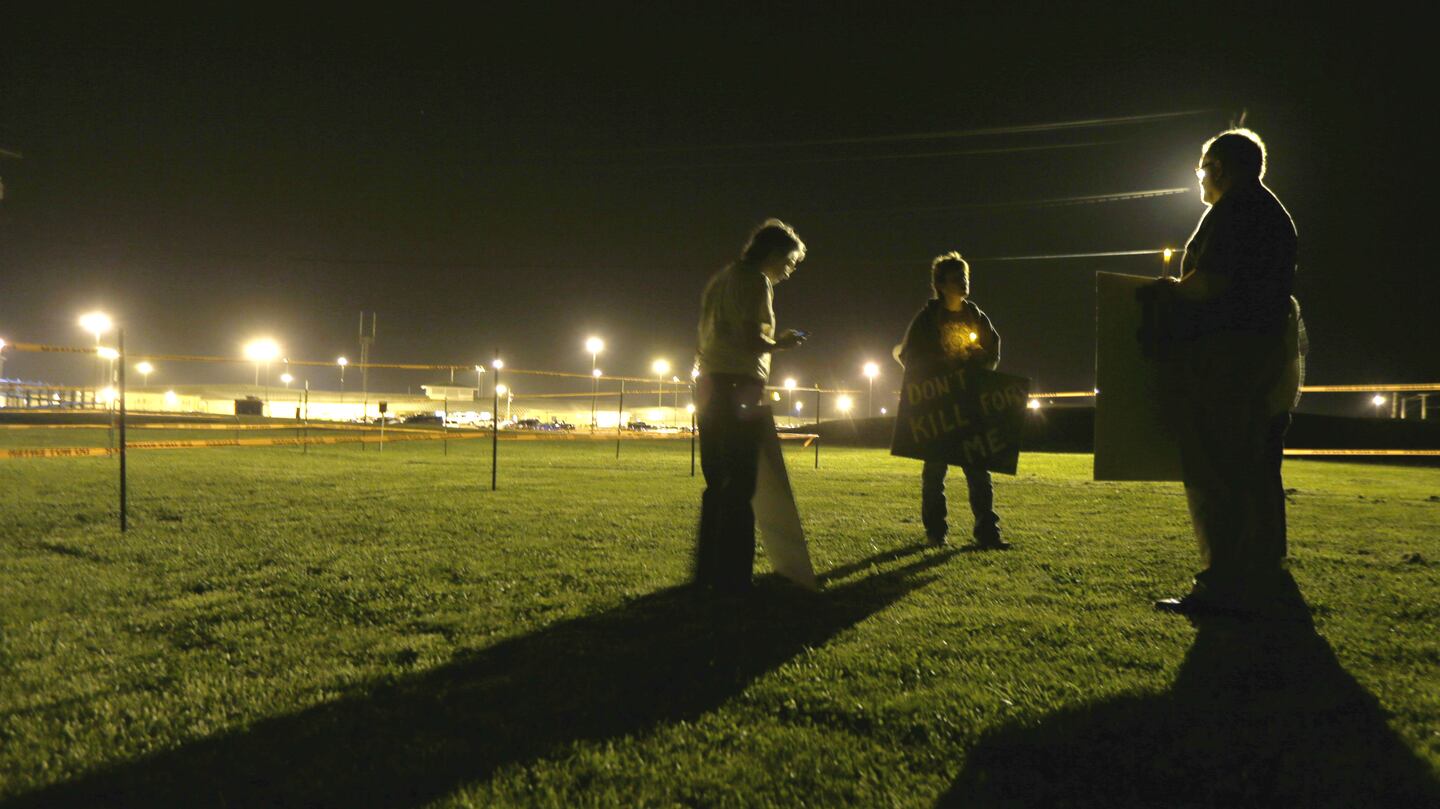BONNE TERRE, Mo. — Walter Barton maintained his innocence through two mistrials, two overturned convictions and decades of appeals. Despite his claims, the convicted Missouri killer on Tuesday became the first death row inmate executed since the coronavirus pandemic began.
Barton, 64, was executed in connection with the Oct. 9, 1991, murder of Gladys Kuehler, an 81-year-old mobile home park manager. According to court records, Kuehler was sexually assaulted, had her throat cut and was stabbed more than 50 times at Riverview Mobile Home Park, the Ozark community where she lived and worked.
In Barton’s final words to the public, he again proclaimed his innocence.
“I Walter ‘Arkie’ Barton, am innocent, and they are executing an innocent man!!” the written statement said, according to the Kansas City Star.
Remember #WalterBarton and his final statement. pic.twitter.com/j8VvRZcWXo
— innocence (@innocence) May 20, 2020
A reporter who witnessed Barton’s lethal injection said he breathed heavily several times after the drugs were administered, then stopped. He was pronounced dead at 6:10 p.m., about two hours after the U.S. Supreme Court denied his final bid for a stay of execution.
The execution took place at the state prison in Bonne Terre, which The Associated Press reported has thus far avoided any confirmed cases of COVID-19. Nevertheless, the prison implemented strict guidelines to ensure anyone coming into the building would remain healthy.
That included face coverings and temperature checks upon entering the prison, the AP reported.
Death penalty opponents, including Sister Helen Prejean, accused Missouri officials of rushing to begin executions again even as a global pandemic kills thousands of people per day in the U.S.
“Why is MO @AGEricSchmitt’s office working overtime to push through an execution during a global pandemic?” Prejean tweeted earlier this week. “Courts need more time to consider complex evidence and records because Walter Barton was tried FIVE different times for the same crime. Respect the district court’s decision!”
A total of six executions have been delayed due to coronavirus concerns since the outbreak began. The last U.S. execution prior to Barton’s was the March 5 execution of Nathaniel Woods in Alabama.
Woods, 44, was executed for his participation in the 2004 killings of three Birmingham police officers. His accomplice, Kerry Spencer, remains on death row awaiting execution.
Woods’ supporters, including politicians, celebrities and Spencer, fought to have his execution halted because he never fired a bullet during the alleged ambush that killed Officers Harley Alfred Chisholm III, 40, Carlos Winston “Curly” Owen, 58, and Charles Robert Bennett, 33. Court records indicate Woods was unarmed and being handcuffed when Spencer opened fire.
>> Related story: ‘100% innocent: Supporters react to Nathaniel Woods’ execution
Like that of Woods, Barton’s case has been marred by controversy.
Court records filed by the defense indicate Barton became involved in the case after Kuehler’s granddaughter and a resident of the mobile home park asked him to accompany them to check on the elderly woman. Barton, described in early news reports as a transient, had previously lived at the park and frequently spent time there.
He had been evicted two weeks before the killing for failure to pay rent, news reports said at the time.
Why is MO @AGEricSchmitt’s office working overtime to push through an execution during a global pandemic? Courts need more time to consider complex evidence and records because Walter Barton was tried FIVE different times for the same crime. Respect the district court’s decision!
— Sister Helen Prejean (@helenprejean) May 17, 2020
Walter Barton has been tried five separate times for the same crime. At least three of the jurors that sent him to death row now have doubts after seeing new evidence. @GovParsonMO should stop this execution and appoint a Board of Inquiry to figure out what really happened.
— Sister Helen Prejean (@helenprejean) May 18, 2020
The trio found Kuehler on the floor of her trailer in a pool of blood. She had more than 50 stab wounds, her throat was slashed ear-to-ear and two X-shaped wounds were cut into her abdomen deep enough to expose internal organs.
Barton became a suspect in the brutal crime due to a small bloodstain that investigators spotted on his shirt. Testing indicated the blood belonged to the victim, according to court records.
“In addition, there was the assumption that Mr. Barton was ‘the only person known to have been in the neighborhood on Oct. 9, 1991 who might have done such a thing,’” his appellate attorneys said in court documents.
The AP reported that Barton was convicted solely on the basis of the bloodstain and the testimony of what his defense team described as an unreliable jailhouse informant.
He was also tried a total of five times in Kuehler’s death. His first trial ended in a mistrial in April 1993 because the state failed to endorse witnesses for trial, according to court documents.
Barton’s next trial ended in a second mistrial that October when the jury failed to reach a unanimous verdict, the documents show. He was convicted at his third trial in 1994 and sentenced to death.
The Missouri Supreme Court later overturned the conviction because of unlawful limitations placed on the defense during closing arguments.
The perjured testimony of a jailhouse informant resulted in the overturning of a second conviction and death sentence handed to Barton in 1998, the court records show. Barton was ultimately convicted for the third time at his fifth trial in 2006.
His final conviction was also nearly overturned on appeal.
“The Missouri Supreme Court was closely divided on the result, with four judges voting to affirm and three judges voting to reverse, dissenting that the ‘sorry record’ in the case did not support the conviction or death sentence,” Barton’s attorney wrote in an appeal filed earlier this month.
The Innocence Project, which had taken up Barton’s cause, argued that he was likely innocent of the murder. Besides the unreliable witness, the forensic analysis of the blood found on Barton’s clothing has been called into question in recent years.
The spot of blood, which Barton claimed got onto his shirt when he pulled Kuehler’s distraught granddaughter away from her body, was identified by a prosecution witness as an “impact spatter” stain.
An expert witness hired by Barton’s appellate defense team found that the spot was instead a transfer stain, which gets on someone’s clothing when the cloth touches a bloody surface.
“New expert analysis has revealed that the spot is consistent with Barton’s account of events and that the blood was not a result of spatter from the crime,” Innocence Project officials said. “Significantly, the victim was stabbed 50 times and the real perpetrator of the crime would have been covered with blood, which Barton was not.
“The only other physical evidence in the case -- hair found on the victim’s torso and biological material underneath her fingernails -- does not match Barton.”
According to the Innocence Project, the same jailhouse informant who perjured herself at Barton’s 1998 trial -- leading to the overturning of that conviction -- was allowed to testify at the fifth and final trial.
In addition, the unit that convicted him has a dubious history, the organization said.
“Barton’s case was prosecuted by a special unit in the Missouri Attorney General’s Office, which prosecutes capital cases throughout the state alongside or, at times, instead of the local county prosecutor’s office,” the Innocence Project said. “This same office was responsible for prosecuting Joshua Kezer, Dale Helmig, Mark Woodworth, and Brad Jennings, all of whom were later exonerated.
“In total, these men spent nearly 60 years wrongfully incarcerated.”
Walter Barton is scheduled to be executed on Tuesday despite evidence of innocence & significant state misconduct at his 5 trials. The unit that prosecuted Mr. Barton has also prosecuted other innocent men. One of them is Mark Woodworth. Read his op-ed. https://t.co/w2GYOnaW4E
— Midwest Innocence Project (@The_MIP) May 18, 2020
Judges ruled that the prosecutors from the unit had “repeatedly misstated the evidence,” knowingly presented false testimony, and failed to disclose evidence, the group said.
“This office has now prosecuted Mr. Barton five times, leaving, as one Missouri Supreme Court justice noted, ‘a trail of mishaps and misdeeds that, taken together, reflect poorly on the criminal justice system,’” the Innocence Project said.
Barton’s appellate attorney, Fred Duchardt Jr., said in court filings that at least three of the jurors who voted to convict his client had recently signed affidavits saying the new bloodstain evidence would have affected their deliberations.
One juror, Ashleigh Bauernfeind, said in her statement that she felt, at trial, that Barton’s trial lawyer did not work hard to counter the state’s claims on the blood evidence.
“I have recently reviewed the affidavit and findings of Lawrence Renner, the blood spatter expert retained by the defense for Mr. Barton’s federal habeas case,” Bauernfeind’s affidavit says. “I find Mr. Renner’s testimony to be compelling, as it directly contradicts the state’s theory that the bloodstains on Mr. Barton’s clothing were impact spatter, and supports the defense theory that they were transfer stains.
“Had I heard this evidence at Mr. Barton’s trial, it would have affected my consideration of Mr. Barton’s guilt, as it related to the state’s strongest evidence against him.”
Missouri killed Walter Barton last night. Prosecutors tried him no fewer than five different times, and used two notoriously unreliable kinds of evidence—jailhouse informant testimony and blood-spatter analysis—to win a conviction. Serious questions about his innocence remain. https://t.co/Pd7YzDojh8
— Pamela Colloff (@pamelacolloff) May 20, 2020
The jury foreman, Paul Bartlett, was one of the other jurors who supported Barton in his final appeal. His affidavit is nearly identical to that of Bauernfeind, except for a handwritten note at the bottom.
“I would have been uncomfortable recommending the death penalty had I heard this evidence,” Bartlett wrote.
The next scheduled execution amid the COVID-19 crisis is scheduled for June 16 in Texas, the AP reported. The death row inmate slated for lethal injection that day is Ruben Gutierrez.
Gutierrez, who is scheduled to die six days after his 43rd birthday, was sentenced to death in 1999 for the Sept. 5, 1998, murder of an 85-year-old woman killed in her home office. According to the Texas Department of Criminal Justice, the victim was struck repeatedly and stabbed multiple times in the head.
Gutierrez and his two accomplices, Rene Garcia and Pedro Garza, fled with at least $56,000, the TDCJ website states.
Cox Media Group











